Indus Valley Civilization (2900 – 1700 BC)
by Devender
0 1623
The Indus Valley Civilization is also known as the Bronze Age Civilization. It flourished on the basin of the Indus River and Ghaggar-Hakra River.
Indus Valley Civilization
This civilization particularly flourished at the bends of rivers that provided water. It provided an easy means of transportation and also protection by way of natural barriers of the river. It was one of the three early civilizations of the world along with Egypt and Mesopotamia.
- Sights of Indus Valley civilization:
- Kalibangan (Rajasthan, Ghaggar)
- Banawali (Hissar, Ghaggar)
- Rakhigarhi (Hissar, Ghaggar)
- Dholavira (Kutch)
- Harappa (Pakistan, Ravi)
- Mohenjodaro (Pakistan, Indus)
- Chanhudaro (Pakistan, Indus)
- Sutkagendor (Pakistan)
- Sukotada (Gujrat)
- Lothal (Gujrat, Bhogava)
- Kalibangan
- Banawali
- Rakhigarhi
- Dholavira
- Rakhigarhi
- Dholavira
- Bhagwanpura
- Manda (Jammu)
- Chandigarh, Shangol (Punjab)
- Daulatpur, Mitthal (Haryana)
- AlamgirpurHulas (West UP)
- Seals - Indus Valley Civilization
- Used as an amulet - to ward off the evil
- Use as an educational tool - the presence of pie sign
- Prominent Seals - Pashupati, humped bull, elephant and rhinoceros
- Indus seals found in Mesopotamia - Sign of possible trade
- Sculpture - Indus Valley Civilization
- Lost Wax Technique
- Statue of a Dancing Girl
- Buffalo with its uplifted head, back and horns
- Terracotta - Indus Valley Civilization
- Mother Goddess
- Toy carts with wheels
- Pottery - Indus Valley Civilization
- The pottery was mainly used for the household purposes such as storage of water, food grains, etc.
- And the miniature vessels (Less than 1/2 inch) were used for decoration
- Beads and Ornaments
- Evidence was also found of dead bodies buried along with ornaments
- For cosmetics, Lipstick and face-paint, Cinnabar was used
- This civilization was also familiar with eyeliners
- Extensive Town Planning
- The people of this civilization were also familiar with the concept of two-stories houses
- The fortifications with gateways enclosing the walled cities suggest that there was fear of being attacked
- Baked bricks were used as a building material on a large scale
- The granaries in Citadels with strategic air-ducts suggests the idea of an organised collection and distribution system
1 Early or Pre Harappan:
2 Mature or Harappan:
3 Late or Post Harappan:
These seals are engraved in the pictographic script and the writing on them is from right to left that is yet to be deciphered. Soft River Stone, Steatite, Gold, and Ivory were used to make the seals for mainly trade and commerce.
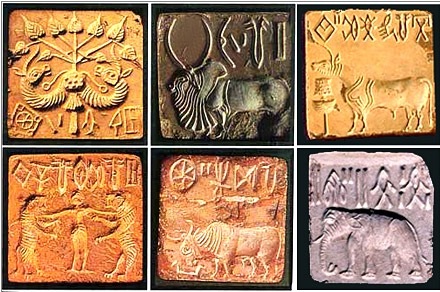
Two stone male figures were found that are: Torso in red sandstone and Bust of a bearded man in steatite. The bronze casting was widely used after the lost wax technique.
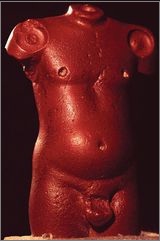
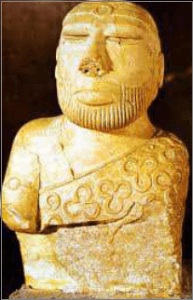
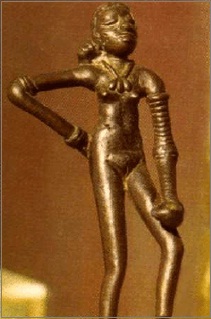
The wax figures are covered with a coating of clay and allowed to dry. After that, it is heated and the molten wax is allowed to drain through a tiny hole at the bottom of the clay.
Then, the hollow mould is filled with bronze or any other metal and once the metal is cooled, the clay is removed. For Example:
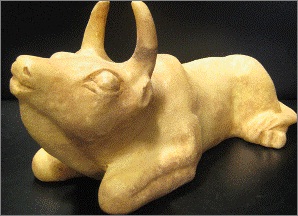
Terracotta is a fire-baked clay and it is handmade using the pinching method. The terracotta representations of the human form are crude as compared to stone and bronze statues. Some examples are:
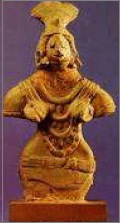
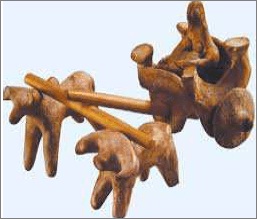
The pottery of this era is mainly plain and painted in red and black. However, plain pottery is more common than a painted one. It mainly consisted of the very fine wheel-made wares and only a very few hand-made.
Vessels with a large hole at the bottom and small holes all over the wall are used as perforated pottery. These vessels were probably used for straining liquor.
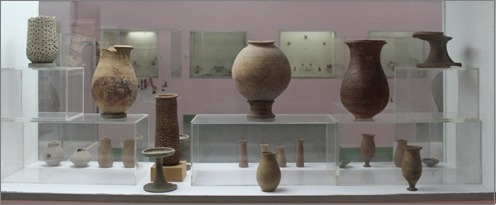
The beads and ornaments of the Indus Valley Civilization were made of precious metals, gemstones, bone and even baked clay. The most common ornaments were necklaces, armlets and finger rings.
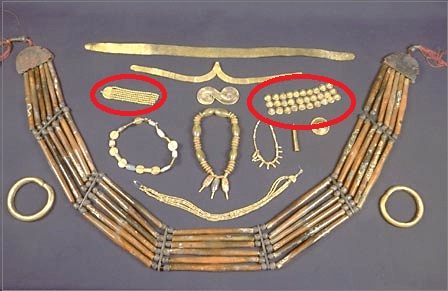
There were Citadel/Acropolis in cities for members of the ruling class and the common used to live in a town just below the citadel in brick houses. Evidence of public buildings, administrative or business centres, pillared halls and courtyards were also found.
There was a remarkable grid system of roads where roads cut at a right angle to each other. There was also an underground drainage system that connected each house and street while being covered with bricks/stone slabs which were quite remarkable. No temples have been found at any of the sites which suggests that it was ruled by merchants and not priests.
There was the presence of weights also (Mostly in multiple of 16) used for trade and for measurement, bronze made marked sticks were used. The Great Bath shows the importance of ritualistic bathing and cleanliness in this culture.
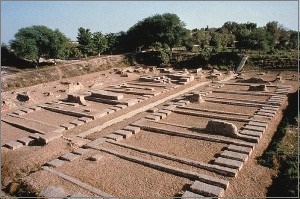
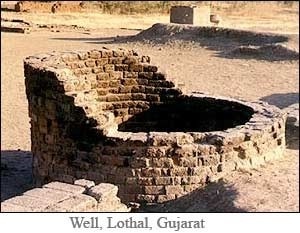
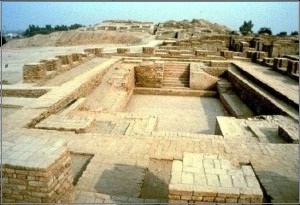

Share:






Comments
Waiting for your comments